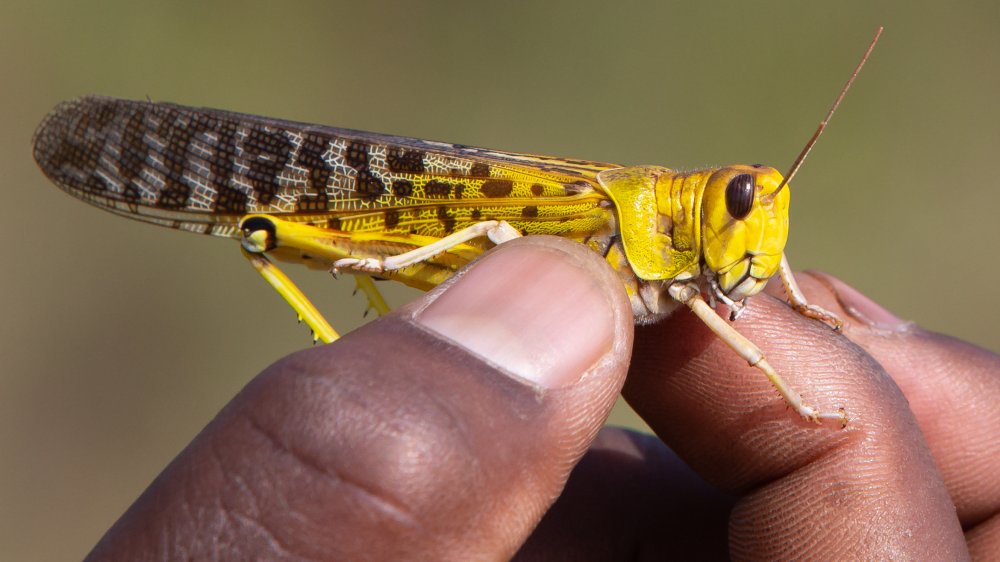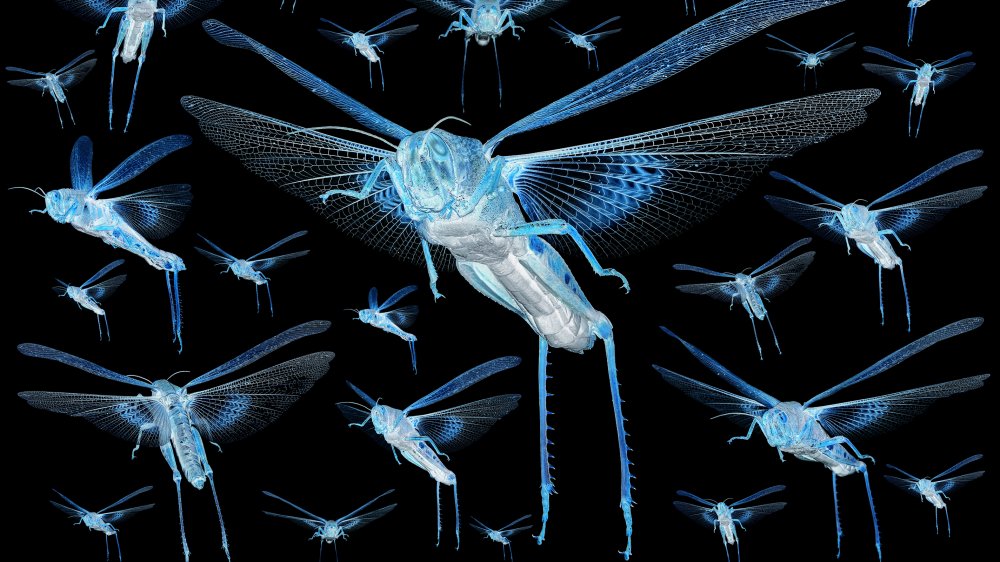The Truth About The US Navy's 'Bomb-Sniffing Cyborg Locusts'
Sometimes evolution is the best engineer. In a development that sounds more like a plot from a Neil Stephenson novel, an Office of Naval Research-backed project has discovered a method to utilize locusts — yes, actual locusts – as bomb-sniffing cyborg reconnaissance tools. Instead of artificially constructing chemical sensors capable of identifying and flagging likely incendiary compounds, scientists decided to "hijack" the biblical insects' powerful sniffers.
A research team from Washington University in St. Louis implanted electrodes into the brains of American locusts, which allowed them to digitize and transfer data from the olfactory (read: smelling) region of the locusts' central nervous systems. Their results were published and made public last month, the culmination of three years of research that began back in 2016 with a $750,000 grant from the Navy.
Researchers trumpeted their results as a potentially useful tool in the war on terror. The insects have successfully been used to detect ammonium nitrate, a substance used in TNT, RDX and other incendiaries in wide use by terrorist groups. Individual locusts were able to successfully identify gases released by ammonium nitrate, but results improved significantly when groups of seven or more locusts were deployed in concert. In other words: bomb-sniffing swarms. The electrodes implanted in the locust brains signaled explosive detection within 500 milliseconds of contact.
Cyborg locusts could be the latest tool in the war on terror
Scientists claim they could never have invented such an efficient artificial detection system from scratch. The secret to the locust system's speed and efficacy is the locust's peculiar biology. Locust antennae are loaded with olfactory neurons — nearly 50,000 per bug. That neural density gives them the capacity to identify a wide range of substances, including explosives. Any locust who smelt it will know exactly who dealt it.
There are some practical challenges to deploying the locusts in a combat setting. For starters, the cybernetic implants only last about seven hours before the insect carriers need to be replaced. Professor Alper Bozkurt of North Carolina State University suggests that the the relevant sensory organs may need to be "extracted" from the organisms and implanted into a more stable system. So instead of sticking computers inside the insects, he wants to chop up the insects and stick their parts onto computers.
Whether our future is populated by swarms of terrorist-hunting cyborg insects, or laptops with locust antennae stuck inside their USB ports, that future is rapidly approaching. Incredible or dystopian? We report, you decide.

